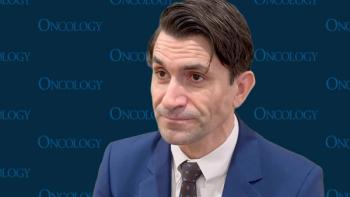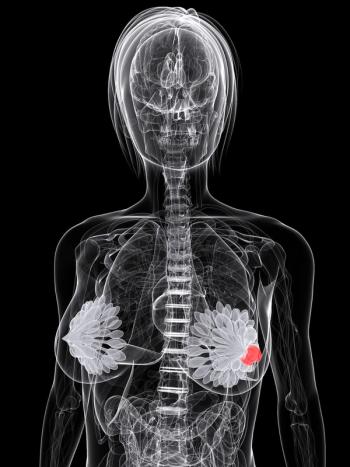
Oncology NEWS International
- Oncology NEWS International Vol 8 No 9
- Volume 8
- Issue 9
Dose-Intense Chemo Regimen for Younger Patients With NHL
LUGANO, Switzerland-Younger patients with histologically aggressive, stage IV non-Hodgkin’s lymphoma (NHL) might benefit from a dose-intense etoposide-containing regimen, according to late follow-up results from the British National Lymphoma Investigation (BNLI) reported at the VII International Conference on Malignant Lymphoma.
LUGANO, SwitzerlandYounger patients with histologically aggressive, stage IV non-Hodgkins lymphoma (NHL) might benefit from a dose-intense etoposide-containing regimen, according to late follow-up results from the British National Lymphoma Investigation (BNLI) reported at the VII International Conference on Malignant Lymphoma.
Between 1987 and 1991, the BNLI group randomized 459 patients with stage II to IV diffuse large-cell or mixed-cell lymphoma to receive either at least six cycles of a 2-weeks-on, 2-weeks-off CHOP (cyclophosphamide, doxorubicin [Adriamycin], Oncovin [vincristine], and prednisone) regimen or 12 weeks of therapy with a multiagent weekly regimen called PACEBOM.
The PACEBOM regimen, an adaption of MACOP-B with lower doses of prednisone and methotrexate and the addition of etoposide, consisted of prednisone, Adriamycin, cyclophosphamide, etopo-side (150 mg/m² on day 1), bleomycin, Oncovin, and methotrexate.
The complete remission rates in the two arms of the trial were 57% with CHOP and 63% with PACEBOM, a difference that is not significant, reported Professor David Linch, of University College, London.
If one looks at the overall survival curve, updated to May 1999, there is an apparent benefit for PACEBOM, but this is not statistically significant, Dr. Linch added. However, he pointed out, given that many participants were sexagenarians at the start of the trial 11 years ago, it is not surprising that some of these elderly patients have since succumbed to causes other than lymphoma.
In contrast, PACEBOM produced a highly significant gain in cause-specific survival among patients under the age of 50 who had stage IV disease. Likewise, 8-year overall survival in this subgroup was significantly prolonged by PACEBOM treatment.
I fully appreciate that these types of retrospective subgroup analyses must be treated with great caution, Dr. Linch acknowledged. This study does not prove that PACEBOM is better than CHOP in younger patients with poor-prognosis disease, but it is suggestive, he emphasized. To confirm the possible benefit, he observed, it will be necessary to conduct separate, large-scale trials of dose-intensive chemotherapy in high-risk patients.
Multiagent, conventional-dose therapy, particularly regimens that contain etoposide, should not be discarded as having no hope for the future, Dr. Linch said, adding that the results of additional studies incorporating etoposide should be forthcoming in the near future.
Articles in this issue
over 26 years ago
‘Gonzalez Diet’ to Be Tested in Pancreatic Cancerover 26 years ago
Talking to Members of Congress About Cancer Issuesover 26 years ago
Modified SPECT Scintimammography Proves More Accurateover 26 years ago
Lilly Enjoined From Promoting Evista for Breast Cancer Preventionover 26 years ago
Experts Brief Capitol Hill on Trial Costs Surveyover 26 years ago
NIH Plan Quadruples Prostate Cancer Research Fundsover 26 years ago
Gabapentin as Adjuvant to Opioids in Neuropathic Painover 26 years ago
Biochemotherapy May Be an Option in Metastatic Melanomaover 26 years ago
PET Scans Spare Some NSCLC Patients From Mediastinoscopyover 26 years ago
Computer Technique Gives New Life to Thermal Breast ImagingNewsletter
Stay up to date on recent advances in the multidisciplinary approach to cancer.
















































































